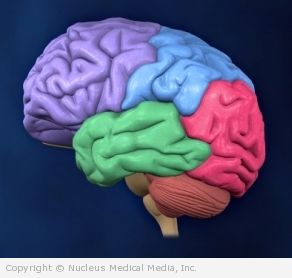Bipolar disorder
(Manic-Depressive Illness; Manic Depression; Manic Disorder; Manic Affective Disorder)
Bipolar disorder – Definition
Bipolar disorder is a mental health condition marked by extreme swings in mood, energy, and the ability to function. The mood changes of bipolar disorder are more dramatic than normal ups and downs. They can hurt relationships and cause poor job or school performance. Bipolar disorder can be treated. Contact your doctor if you think you may have this condition.
The two mood extremes of bipolar disorder are mania and depression. In mania, one of the defining symptoms is an increase in energy and a decreased need for sleep. The mood may be overly happy or irritable. In depression, a down mood with fatigue takes over, and it is often accompanied with irritability.
There are four forms of this condition:
- Bipolar I disorder — recurrent episodes of mania often immediately followed by depression; episodes can be severe
- Bipolar II disorder — episodes of less severe mania (called hypomania) that alternate with episodes of major depression
- Bipolar disorder not otherwise specified (BP-NOS) — the person has symptoms of bipolar disorder (eg, acting in a way that is outside of their normal behavior), but the symptoms do meet the specific criteria for bipolar I or bipolar II disorder
- Cyclothymia — episodes of hypomania that alternate with episode of mild depression that lasts for at least two years
Bipolar disorder – Causes
The cause of bipolar disorder is not known. This condition tends to run in families. Specific genes may play a role. It is most likely many different genes that act together.

Bipolar disorder – Risk Factors
A family history of the disorder increases your chance of developing it. Tell your doctor if you have a family member with bipolar disorder.
Bipolar disorder – Symptoms
Symptoms include:
- Dramatic mood swings — This can range from elated excitability, unrealistic goal setting, and an exaggerated sense of self to feelings of hopelessness.
- Periods of normal mood in between ups and downs
- Extreme changes in energy and behavior
Symptoms of mania include:
- A mood that is extremely “high” or overly good
- Increased energy and effort toward goal-directed activities
- Restlessness and agitation
- Racing thoughts, jumping from one idea to another
- Rapid speech or pressure to keep talking
- Trouble concentrating
- Decreased need for sleep
- Overconfidence or inflated self-esteem
- Poor judgment, often involving spending sprees and sexual indiscretions
Symptoms of depression include:
- Prolonged sad, hopeless, or empty mood
- Feelings of guilt, worthlessness, or helplessness
- Loss of interest or pleasure in activities once enjoyed, including sex
- Decreased energy or fatigue
- Trouble concentrating, remembering, and/or making decisions
- Restlessness or diminished movements
- Agitation
- Sleeping too much or too little
- Unintended weight loss or gain
- Thoughts of death or suicide with or without suicide attempts
Severe episodes of mania or depression may sometimes be associated with psychotic symptoms, such as:
Hallucinations
- Delusions
- Disorders of thought
Bipolar disorder – Diagnosis
Your doctor will ask about your symptoms and medical history. A physical exam may be done. In some cases, lab tests are ordered to rule out other causes of your symptoms. You may be referred to a mental health specialist. Diagnosis of bipolar disorder is based on:
- Presence of certain symptoms over time
- Absence of other causes, such as some medicines and certain conditions
- Family history of bipolar disorder
Mania is diagnosed if:
- Mood is elevated and there are three or more manic symptoms (listed above)
- If the mood is irritable, not elevated, four symptoms must be present for a diagnosis of mania
- Symptoms last during most of the day, nearly every day, for one week or longer
- Symptoms cause problems in day-to-day functioning
A depressive episode is diagnosed if:
- There are five or more of the depressive symptoms (listed above)
- Symptoms last for most of the day, nearly every day, for a period of two weeks or longer
- Symptoms cause problems in day-to-day functioning
Bipolar disorder – Treatment
Talk with your doctor about the best plan for you.
Medications
The primary treatment is with medicines called mood stabilizers. There are many different types and combinations of medicines, which must be tailored by your doctor to target your symptoms. Examples of common medicines used to treat bipolar disorder include:
- Lithium — the oldest mood stabilizer, often used as initial treatment (helps prevent manic and depressive episodes from returning)
- Antiseizure medicines — also used as mood stabilizers instead of or in combination with lithium
- Lamotrigine (Lamictal)
- Valproate (Depakote)
- Carbamazepine (Tegretol)
- Other drugs that may be used to help treat mood problems in bipolar disorder include:
- Benzodiazepines — a potentially addicting class of medicines that can be used to treat agitation or insomnia, usually on a short term basis
- Antidepressants — used to treat depression, usually prescribed in combination with a mood stabilizer, like lithium
- Antipsychotic medicines — used for acute manic or mixed episodes and maintenance treatment
The plan is based on the pattern of the illness. Treatment may need to be continued indefinitely. It should prevent significant mood swings.
Psychotherapy
Psychotherapy is often an integral component of a comprehensive treatment plan. Therapy may include:
- Cognitive-behavioral therapy
- Counseling
- Family therapy
- Interpersonal and social rhythm therapy (a form of therapy designed to treat bipolar disorder)
Electroconvulsive Therapy
Electroconvulsive therapy may be effective when medicines fail. It can be used for both mania and depression.
Bipolar disorder – Prevention
There are no guidelines for preventing bipolar disorder. Taking your daily medicine and following your treatment plan can help prevent future mood episodes from recurring.
